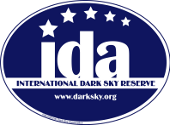- Welcome
- About us
- Make a Donation
- Our Centres
- Our Programmes
- Environmental Education Publications
- Partnerships
- Impact
- Newsletter
- Galleries
Learning and Living
for a Sustainable Future!
Our Surroundings

Namibia
Namibia is home to a little more than 2 million citizens, making it the second least densely populated country in the world. Its climate can be described as arid and semi-arid with annual rainfall varying from 50mm in some areas of the Namib Desert to over 600mm in some areas of the Zambezi. Namibia’s economy is highly dependent on mining, agriculture and tourism.Namibia is home to some of the most beautiful national parks and nature reserves in the world, including the Etosha Pan, Waterberg Plateau Park, Fish River Canyon and the NamibRand Nature Reserve.
Since establishing independence in 1990, Namibia has made great strides to preserve its natural environment. In Namibia’s Vision 2030 statement, Founding President Sam Nujoma clearly outlined a national agenda seeking to preserve the natural environment of Namibia. However, socio-economic factors, unsustainable lifestyle habits and food insecurity make this national agenda quite a challenge. That is why NaDEET seeks to teach Namibians sustainable living methods through hands-on, practical training courses in sustainable cooking technology and water and energy saving methods. We want to see Namibia achieve its goal of macro-environmental sustainability while improving the citizens’ quality of life through fostering knowledge and know-how on how to to preserve their own environment.
Namib Desert
The Namib Desert is considered to be one of the oldest deserts in the world. Its name originated from the Khoi-speaking people, meaning “vast place”. Stretching across the Atlantic sea coast, the Namib is scarred by some of the most massive sand dunes in the world. Geologists theorise that the Namib dune sand originated from the Drakensburg Mountains in South Africa where years of erosion have carried pieces of rock down tributaries of the mighty Orange River. They are then carried north by the Benguela Current and deposited on the Namibian coastline and transported inland by the strong “South-wester wind”. The Namib Sand Sea has recently been named a UNESCO World Heritage site.
Head Office
Libertina Amathila Ave 41, Swakopmund
Tel: +264 (0)81 367 5310
Email: admin@nadeet.org
Postal address
PO Box 8702, Swakopmund, Namibia
NaDEET Centre - NamibRand Nature Reserve - Maltahöhe
Tel: +264 (0)81-1257681
Trust Certificate No : T168/2003
© NaDEET






